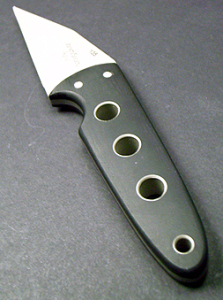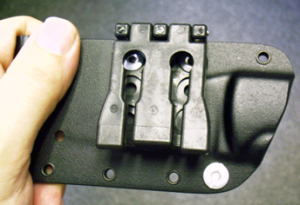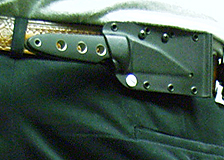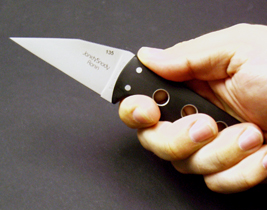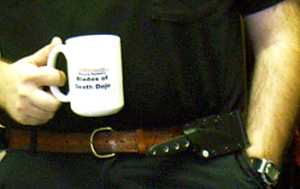According to legend, a Japanese feudal lord – after much antagonism – wounded a self-important government official. For this crime, the lord was ordered to commit seppuku, Japanese ritual suicide. His retainers, or samurai, were dishonored, relegated to the status of ronin – masterless warriors.< In some retellings of this tale, it is said that the ronin played at the parts expected of them for some time, drinking and wandering and generally acting as men with no purpose in life. Supposedly, this was done to lull the government official into a false sense of security. When forty-seven of these men later attacked the official's home, slaying his bodyguards, they offered the cause of their dishonor the chance to commit honorable suicide. When the official refused, the loyal retainers cut off his head. Though they, too, committed seppuku, the Legend of the 47 Ronin immediately brings to mind the concept of warriorhood. Admired for their loyalty, their patience, and their willingness to avenge the lord to whom they owed their allegiance, the masterless warriors of legend are part of a mythos evoked whenever the term "ronin" is uttered.
It was probably with this in mind that Spyderco introduced the Ronin fixed-blade. Intended as a neck knife, the Ronin was designed by Michael Janich. Knifemaker Michael Snody produced custom versions before Spyderco brought the production version to the public.
Well known for his instructional videos and Paladin Press books, such as Knife Fighting: A Practical Course and Street Steel: Choosing and Carrying Self-Defense Knives, Michael Janich is also the man behind Spyderco’s Martial Blade Craft program. He designed the Masters of Defense "Tempest" knife and is a frequent contributor to various knife publications. With that in mind, the buyer of a "defensive" or "tactical" knife is in good hands with Janich. Adding Snody and Spyderco to the mix is a bonus.
The Ronin has a three-inch blade of VG10 steel. A modified "Wharncliffe" pattern, it is very easy to resharpen because the edge is completely straight. It tapers to a needle point and is a very effective thrusting tool. Overall length is just over seven inches.
The smooth Micarta handles, neatly riveted to the full tang, are a little more slippery than I would prefer. The finger cut-out helps improve the grip. That cut-out also provides a minimal "guard," though to be honest I have always preferred more substantial protection in a fighting blade. The top of the blade is notched to provide traction for the thumb.
The Ronin is light enough to serve as a neck knife, though the overall package it makes with its Kydex sheath may seem too large – especially for those lacking a "large mammal" torso. The knife ships from the factory with a neck chain covered in paracord, which is an attempt to get the comfort of paracord with the safety benefits of breakable ball chain. (If an adversary is choking you with the paracord loop of your neck knife, you’ve probably already done something wrong, but there’s no reason not to hedge your bets as much as possible.)
The Kydex sheath is specifically designed to be very wide. This is to keep the knife from flipping over (which leaves the handle oriented in the wrong direction) when it is worn around the neck. This same feature leaves some users complaining that the sheath is too big, however, for some prefer a neck knife that is as slim and low-profile as possible.
There is an adjustable screw near the opening of the sheath. Tightening the screw tightens the retention of the Ronin, which is a nice touch. The Tek-Lok clip shipped with the sheath allows the user to position it in any number of ways: vertically, inverted, and horizontally, either left or right hand.
During testing I took to wearing the Ronin horizontally on my left side for a left-hand reverse-grip draw. I wore it out and about, even traveling downtown for lunch a few days in a row to see if anyone would give it a second glance. It blended in on my belt line and caused me no trouble, though I’ll admit that even I knew I was pushing it.
The knife draws smoothly and is small and light enough to handle well. The smooth handle does not lend itself readily to a variety of grip manipulations, which some may find less than satisfactory. Locked in one firm grip, however, the little Ronin performs well. It would be difficult not to like this knife very much.
With an impressive pedigree and a really cool name, the Ronin is bound to sell well and attract something of a following, especially among fans of Spyderco’s growing line of fixed-blades. Keep one caveat in mind, however: the name of your knife may have legal repercussions in the event that you use the blade for self-defense. You had better be prepared to offer a reasonable explanation for your selection of the Ronin if you ever do use it for personal protection.
Legends of masterless, fiercely loyal warriors may be ancient, but Spyderco’s Ronin is a contemporary choice for those going armed in modern society.
